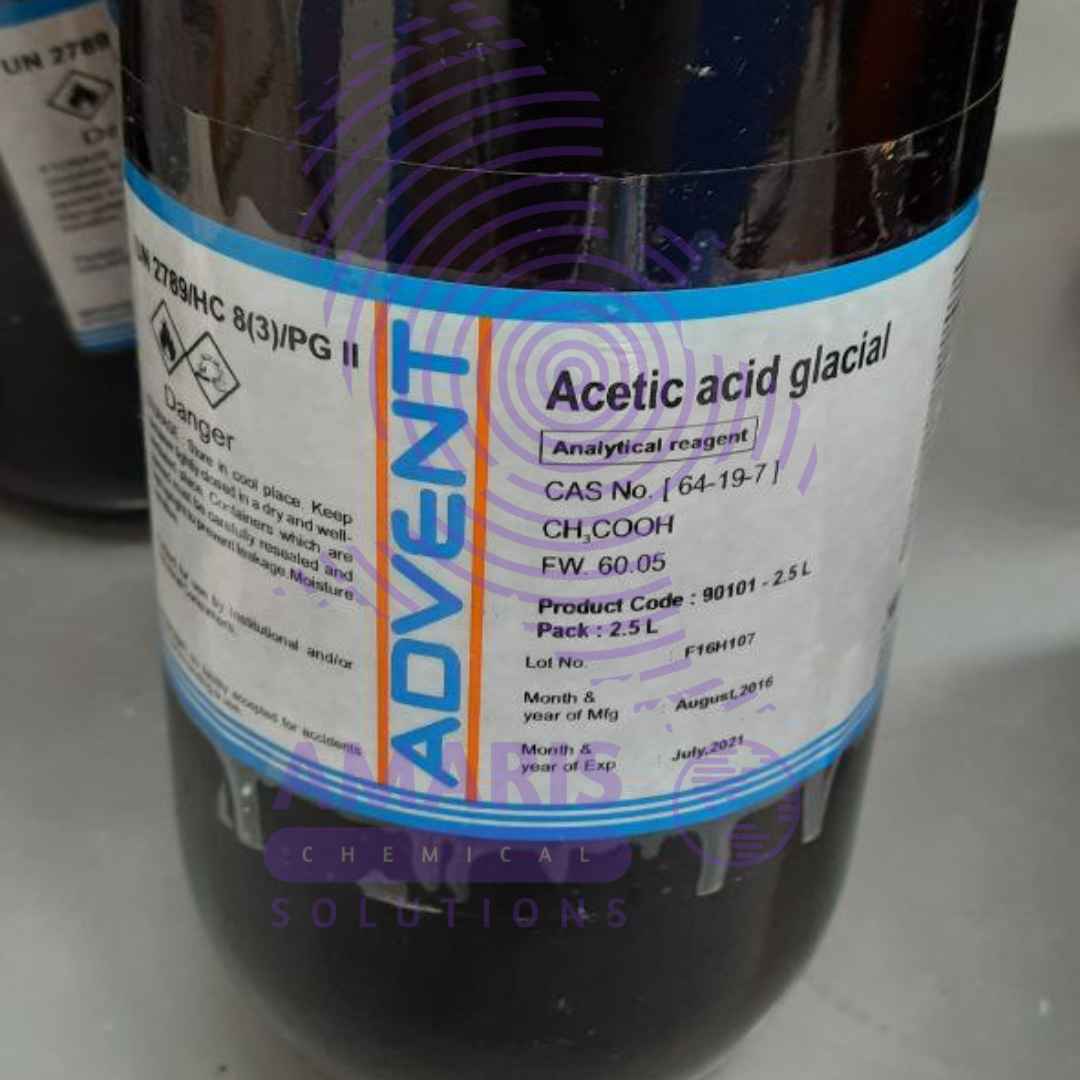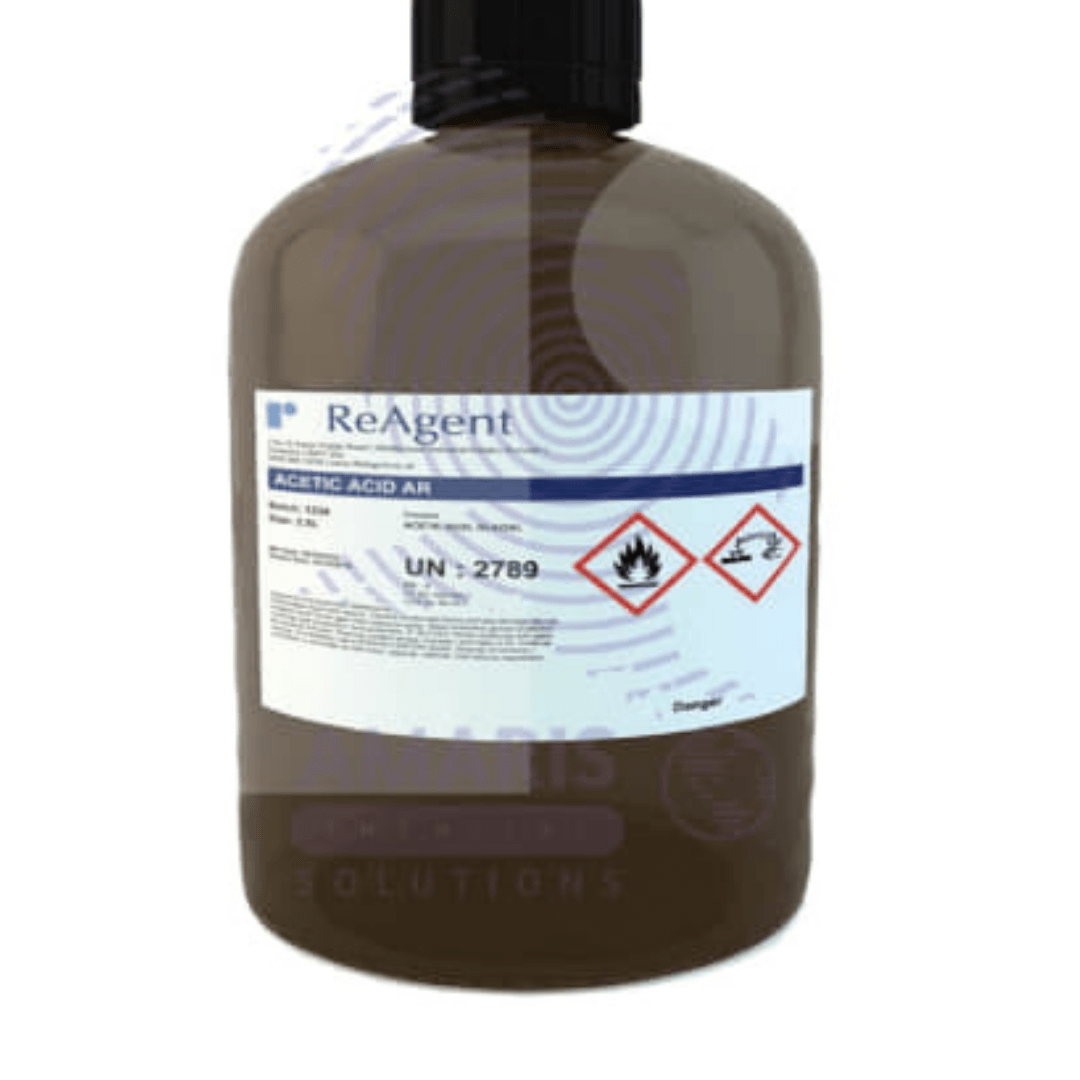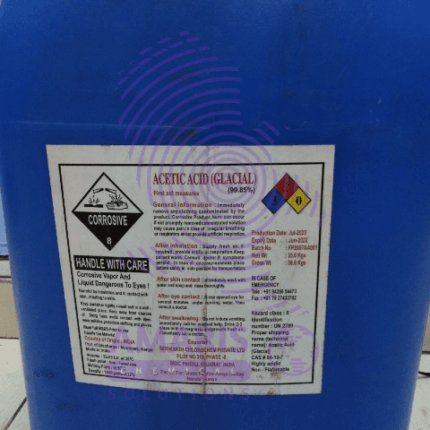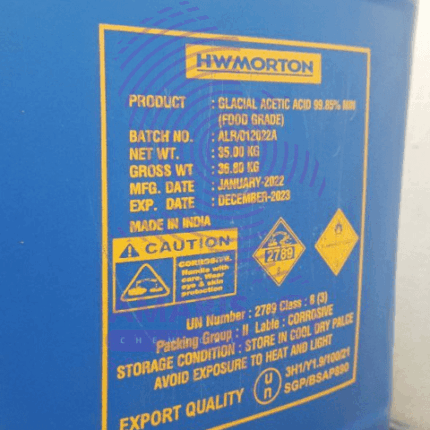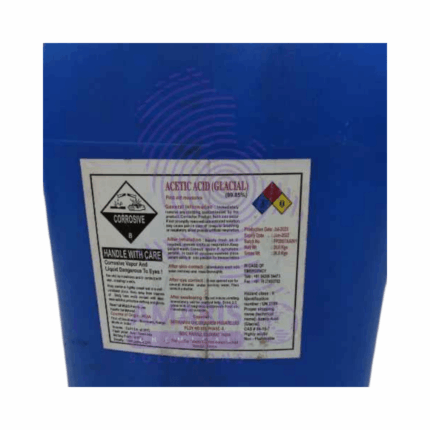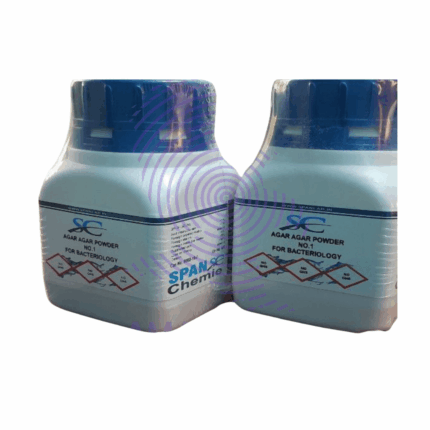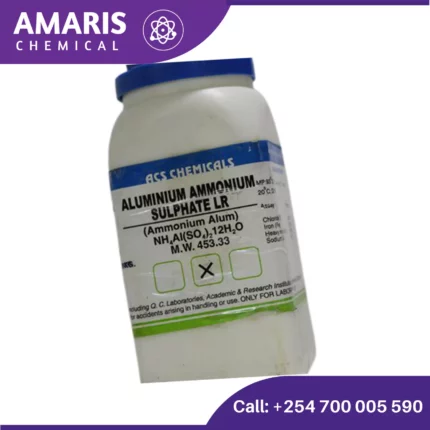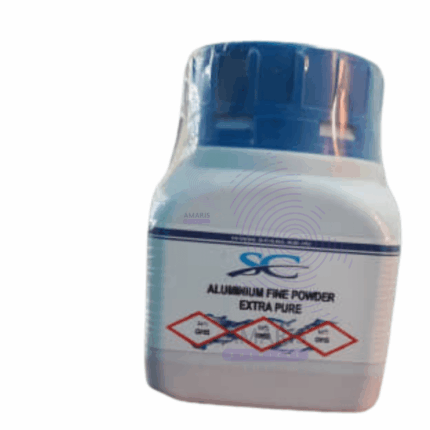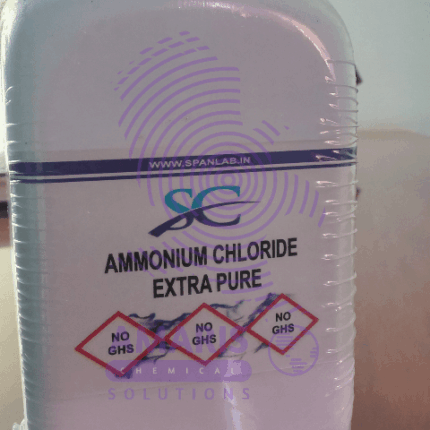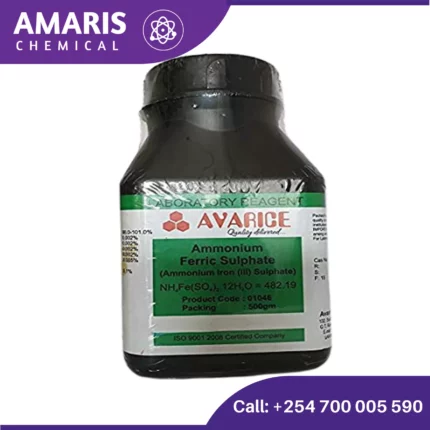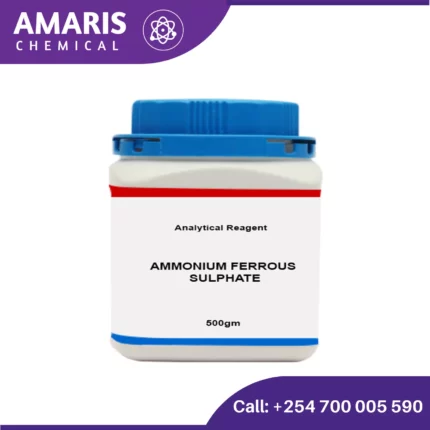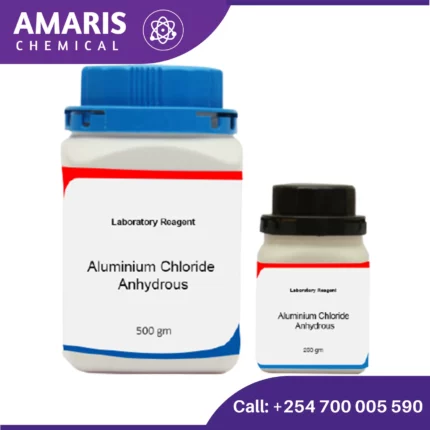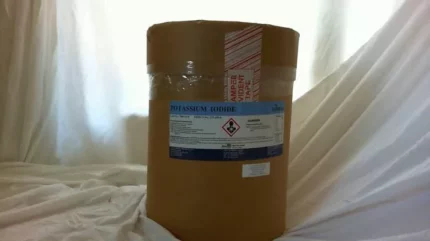“Ammonium Cupric Chloride” has been added to your cart. View cart
“Ammonium Cupric Chloride” has been added to your cart. View cart
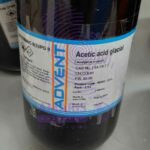
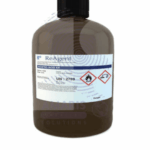
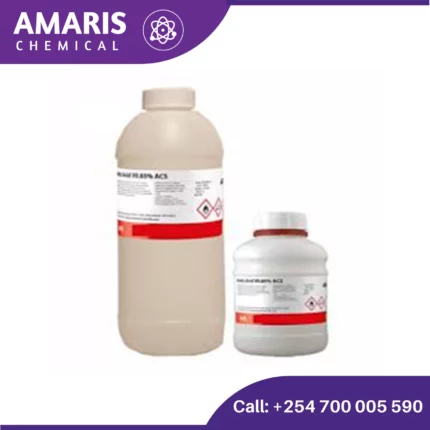
Acetaldehyde
KSh5,430.00 Original price was: KSh5,430.00.KSh4,500.00Current price is: KSh4,500.00.
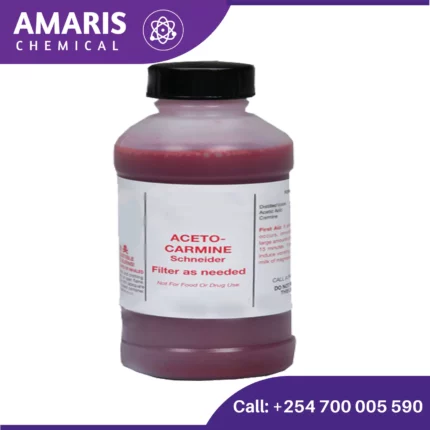
Aceto Carmine 100 ml
KSh1,745.00 Original price was: KSh1,745.00.KSh1,500.00Current price is: KSh1,500.00.
Acetic Acid 2.5litre
KSh1,490.00 Original price was: KSh1,490.00.KSh1,300.00Current price is: KSh1,300.00.
Acetic acid is an organic acid with the chemical formula CH3COOH, also known as ethanoic acid. It is a colorless liquid with a pungent, sour taste and a distinctive vinegar-like odor. Acetic acid is an important industrial chemical used in the production of various products, including solvents, plastics, textiles, and food additives. It is also the main component of vinegar, which is commonly used as a condiment and preservative in cooking and food preparation.
SKU:
ACS84328CHEM0
Category: Analytical Reagents
Description
Acetic Acid
In laboratory settings, acetic acid finds several applications:
- Solvent: Acetic acid is often used as a solvent for various organic compounds, particularly those that are polar or partially polar. It can dissolve a wide range of substances, making it useful for extraction and purification processes.
- Reagent: Acetic acid is commonly used as a reagent in various chemical reactions. For example, it’s used in the synthesis of esters through Fischer esterification reactions. It’s also used in the production of acetic anhydride, a versatile reagent in organic synthesis.
- pH Adjustment: Acetic acid is a weak acid, and its solution can be used to adjust the pH of other solutions. Since it’s a weak acid, it’s less likely to cause drastic changes in pH compared to strong acids like hydrochloric acid or sulfuric acid.
- Titration: Acetic acid solutions are often used in acid-base titrations, especially for the titration of weak bases or as a standard solution in the determination of unknown concentrations of acids or bases.
- Preservative: In microbiological laboratories, acetic acid solutions are sometimes used as preservatives for samples. Its antimicrobial properties help prevent the growth of contaminants in certain types of samples.
- Cleaning: Dilute acetic acid solutions can be used for cleaning laboratory glassware, particularly to remove mineral deposits or organic residues.
- Staining: Acetic acid is used in some staining techniques, especially in histology, to help fix and preserve cellular structures in tissues.
Additional information
| Weight | 2.5 lbs |
|---|
Shipping & Delivery
You may also like…
Glacial Acetic Acid 35kg Tech grade
Acetic acid is an organic acid with the chemical formula CH3COOH, also known as ethanoic acid. It is a colorless liquid with a pungent, sour taste and a distinctive vinegar-like odor. Acetic acid is an important industrial chemical used in the production of various products, including solvents, plastics, textiles, and food additives. It is also the main component of vinegar, which is commonly used as a condiment and preservative in cooking and food preparation.
Glacial Acetic Acid Food Grade 35kg
Acetic acid is an organic acid with the chemical formula CH3COOH, also known as ethanoic acid. It is a colorless liquid with a pungent, sour taste and a distinctive vinegar-like odor. Acetic acid is an important industrial chemical used in the production of various products, including solvents, plastics, textiles, and food additives. It is also the main component of vinegar, which is commonly used as a condiment and preservative in cooking and food preparation.
Related products
Agar Agar Powder
Agar agar powder refers to the dehydrated and powdered form of agar agar, a natural gelling agent derived from seaweed. It is made by drying and grinding the agar agar gel, resulting in a fine powder with excellent gelling properties. Agar agar powder is commonly used in cooking, baking, and food preparation as a vegetarian and vegan substitute for gelatin. It is prized for its ability to create firm and stable gels at relatively low concentrations and temperatures. Agar agar powder is versatile and can be used in a variety of recipes, including desserts, confectioneries, jams, jellies, and savory dishes.
Aluminum Ammonium Sulphate
Aluminum ammonium sulfate, also known as ammonium alum or just alum, is a chemical compound with the formula (NH4)Al(SO4)2·12H2O. It's a white crystalline solid commonly used in water purification, leather tanning, and as a mordant in dyeing textiles.
In water purification, alum acts as a coagulant to remove impurities by causing suspended particles to clump together, making it easier for filtration to remove them. In leather tanning, it helps to stabilize the leather by tightening the collagen fibers. And in dyeing textiles, alum helps the dye adhere to the fabric.
However, it's important to note that excessive exposure to aluminum compounds like alum can be harmful, so it's typically used with caution and proper safety measures.
Aluminum Fine Powder
Ammonium Chloride 500gm
Ammonium chloride is an inorganic compound with the chemical formula NH4Cl. It is a white crystalline salt that is highly soluble in water and has a salty taste. Ammonium chloride is often used in various industrial and laboratory applications, including as a flux in soldering, as a nitrogen source in fertilizers, and as a component in dry cell batteries. It can also be used in medicine as an expectorant to help thin and loosen mucus in the respiratory system
Ammonium Ferric Sulphate 500gm
Ammonium Ferrous Sulphate 500gm
Anhydrous Aluminum Chloride
Anhydrous aluminum chloride, often represented as AlCl3, is a chemical compound composed of aluminum and chlorine. "Anhydrous" means it lacks water molecules in its structure. It's a white or pale yellow solid that is highly hygroscopic, meaning it readily absorbs moisture from the air. This property makes handling it a bit tricky since it can form a solution with water vapor in the air, turning into a fuming liquid.
Potassium iodide
Active Pharmaceuticals Ingredients, Analytical Reagents, Nutrient Supplements, Photographic Chemicals

